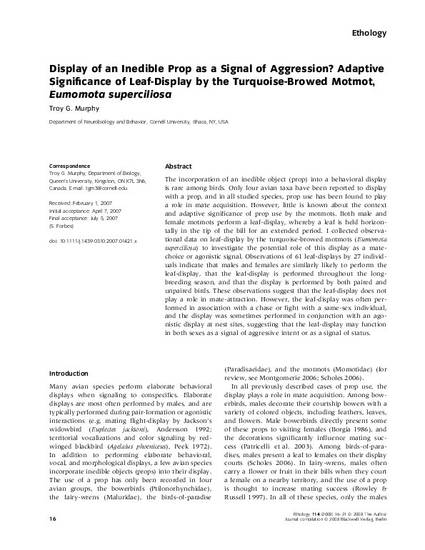
- Biology and
- Life Sciences
The incorporation of an inedible object (prop) into a behavioral display is rare among birds. Only four avian taxa have been reported to display with a prop, and in all studied species, prop use has been found to play a role in mate acquisition. However, little is known about the context and adaptive significance of prop use by the motmots. Both male and female motmots perform a leaf-display, whereby a leaf is held horizontally in the tip of the bill for an extended period. I collected observational data on leaf-display by the turquoise-browed motmots (Eumomota superciliosa) to investigate the potential role of this display as a mate-choice or agonistic signal. Observations of 61 leaf-displays by 27 individuals indicate that males and females are similarly likely to perform the leaf-display, that the leaf-display is performed throughout the long-breeding season, and that the display is performed by both paired and unpaired birds. These observations suggest that the leaf-display does not play a role in mate-attraction. However, the leaf-display was often performed in association with a chase or fight with a same-sex individual, and the display was sometimes performed in conjunction with an agonistic display at nest sites, suggesting that the leaf-display may function in both sexes as a signal of aggressive intent or as a signal of status.
